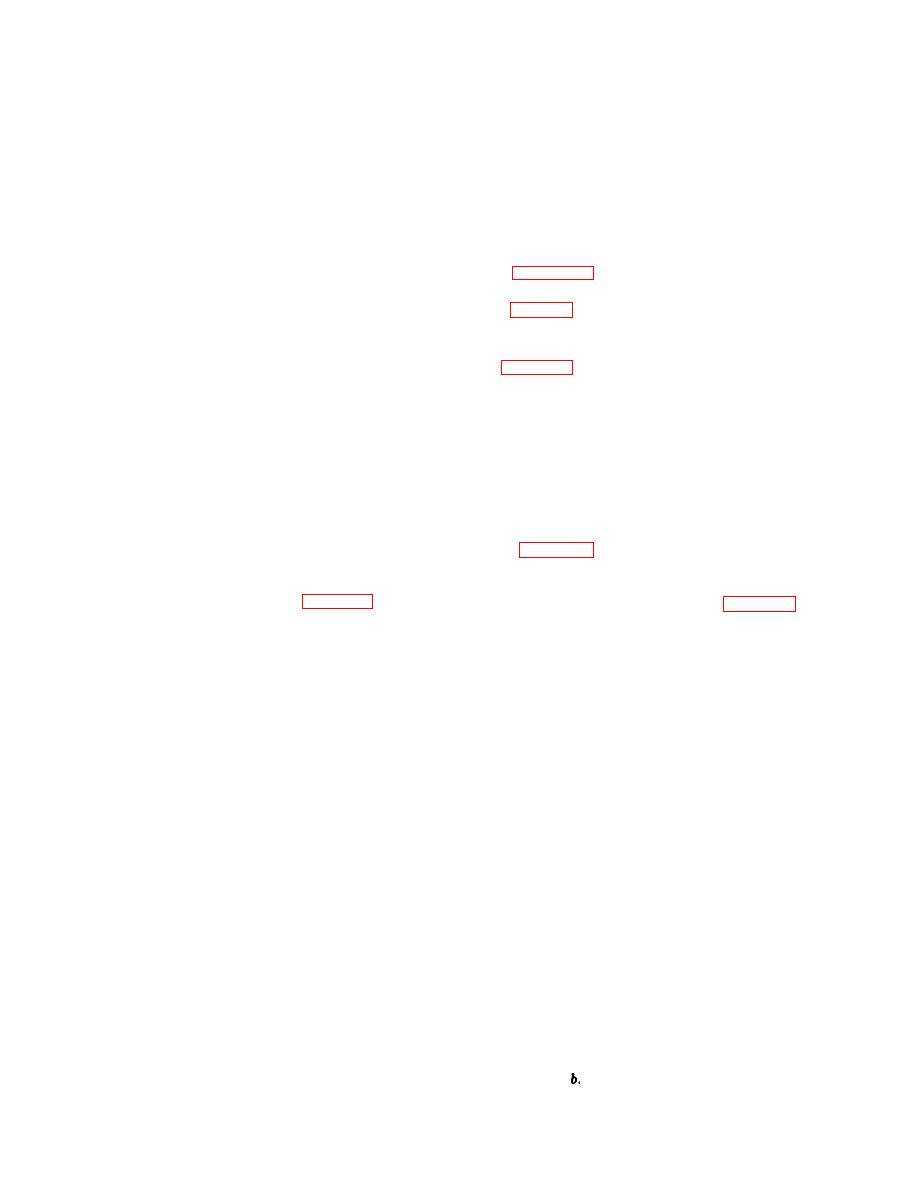 |
|||
|
|
|||
|
|
|||
| ||||||||||
|
|
 TM 11-6625-2609-34
Section Ill. TROUBLESHOOTING
attempt made to localize the fault to a particular
3-3. General Instructions
circuit.
Troubleshooting at direct support includes all the
(2) Operational tests. Operational tests fre-
techniques outlined for organizational mainten-
quency indicate the general location of trouble.
ance and any special or additional techniques
In many cases, the tests will help in determining
required to isolate a defective part. The syste-
the exact nature of the fault.
matic troubleshooting procedure, which begins at
(3) Troubleshooting, The trouble symptoms
organizational, must be completed by means of
l i s t e d in table 3-2 will aid in localizing the
localizing and isolating techniques. The para-
trouble to a part or circuit. For physical location
graphs which follow provide intraunit (within the
of parts (figs. 3-1, 3-2, and 3-3).
unit) troubleshooting procedures and describe the
(4) Resistance and continuity measurements.
localizing and isolating techniques that must be
Make the resistance and continuity measurements
performed at direct support,
listed in table 3-3. Where results other than those
indicated are obtained, isolate the faulty part by
3-4. Organization of Troubleshooting
further resistance measurements.
Procedure
(a) Remove cover from maintenance kit.
(b) Remove test panel from equipment
a. General. The first step in servicing a defec-
case.
tive test set is to localize the fault. Localization
(c) Connect interconnect cable to TRANS-
means tracing the fault to a defective circuit
CEIVER connector on front of test panel.
responsible for the abnormal condition. Some
(d) Set the switches or controls to the
faults, such as burned or loose wires, can often
position indicated in the Point of measurement
be located by sight. The majority of faults, how-
column in table 33.
ever, must be localized by resistance measure-
(e) Refer to the schematic diagram (fig.
ments.
34) and connect the TS-352B/U as indicated
in the Point of measurement column (table 3-3).
aid in isolating the trouble. First, localize the
Refer to TM 115821277-35 for the schematic of
trouble to a single circuit and then isolate the
the radio control.
trouble within that circuit by resistance and con-
(5) Intermittent troubles. In all tests, the
tinuity measurements.
possibility of intermittent troubles should not be
overlooked. If present, this type of trouble often
(1) VisuaI inspection. The purpose of visual
may be made to appear by tapping or jarring
inspection is to locate faults without testing or
the instrument, Check the cables, wiring, and
measuring circuits. All panel lamp indications or
connections of the equipment.
other visual signs should be observed and an
Table 3-2. Troubleshooting
Corrective action
Malfunction
Probable cause
a. Set POWER CB circuit breaker to
1. 28.7 VDC lamp on test panel and
a.
POWER CB circuit breaker CB1
panel lamps on radio control and
ON.
is at OFF.
intercom control do not light.
b. Replace CB1.
POWER CB circuit breaker CB1
b.
defective.
c.
Replace lamps.
Defective lamps . . . . . . . . . . . . . . . .
c.
2. Panel lamps on radio control and
a.
Replace CR2.
a.
Diode CR2 defective . . . . . . . . . . . .
intercom control do not light,
Replace Ml.
b.
Meter Ml defective . . . . . . . . . . . .
b.
3. VHF COMM frequency indicator not
a.
S e t VHF COMM OFF-PWR
a.
VHF COMM OFF-PWR switch is
illuminated.
switch to PWR.
at OFF.
b. Replace lamps.
b.
Radio control lamps DS1 and DS2
defective.
c. Replace switch S4.
c.
Radio control switch S4 is defec-
tive.
4. No output at RECEIVER OUTPUT
a. Check and correct wiring.
a.
Open or shorted wiring from
jacks with proper 132.500-MHz
W1P2B-35 and W1P2B-36 to
signal to AN/ARC-134.
test panel jackS J8 and J9.
Set VHF COMM frequency selec-
VHF COMM frequency not set to
b.
tor switch to 132.500 MHz.
132.500 MHz.
3-2
|
|
Privacy Statement - Press Release - Copyright Information. - Contact Us |